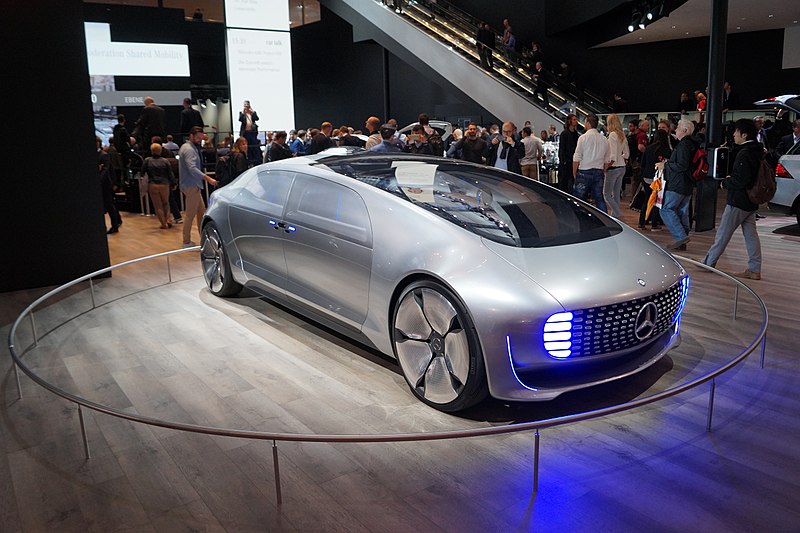
From time to time, an automobile brand will close its doors for good. Sometimes you can see it coming and the reason is clear while others seem to fail overnight. TitleMax, one of our nation’s largest title lending companies, has put together a list and infographic showing 14 discontinued car brands and the reasons to why they failed.
Studebaker (1852-1966) – Studebaker Brothers Manufacturing Company was originally founded in 1852 as a manufacturer of carriages and wagons for farmers, miners and some military vehicles. The entered the automobile arena in 1902 and marketed it’s first gasoline powered car to the public in 1912.
Studebaker became synonymous with reliability and quality over the next 4 decades. They survived the Great Depression through 1939 and continued to set the pace for automakers throughout the 40s. Financial problems and the price wars between GM and Ford forced Studebaker to merge with luxury carmaker Packard to form Studebaker-Packard Corporation in 1954. The financial issues that Studebaker was facing was more than Packard executives had bargained for and the Packard marque was eliminated. In 1962, the company once again became the Studebaker Corporation.
It was only 1 year later that the Studebaker plant in South Bend Indiana discontinued production at the end of 1963. By 1966 all manufacturing by Studebaker cam to a halt with the last vehicle rolled off the assembly line in Ontario, Canada on March 17, 1966.
Oldsmobile (1897-2004) – What began as an independent company founded by Ransom E. Olds, Oldsmobile was soon acquired by the auto giant GM in 1908. Oldsmobile continued to produce high-quality vehicles for GM and became pioneers in transmission technology. In 1937, they introduced the first four-speed semi-automatic transmission called the “Automatic Safety Transmission”. In 1940 they then released the first-of-its-kind, fully automatic transmission, called the “Hydramatic”.
Then in the 50, 60s and 70s Oldsmobile became famous for their “Rocket V8” engine. By the 90s however, Oldsmobile had fallen far behind the pack and was unable to recover the ground they had lost. They had a very impressive run nonetheless. Through its 100+ years of production, they managed to produce over 35 million vehicles and by 2004 had become the oldest surviving American automobile marque.
Packard (1899-1958) – What began as a luxury brand in 1899 became a massive success in the high-end automobile market. Costing four times that of a comparable Oldsmobile, Packards were not cars driven by the common every-day man. In 1928 they had gross sales of over $21 million and marketed the luxury vehicles with the iconic Packard slogan, “Ask the Man Who Owns One”.
During the Great Depression, Packard tried to ease the hardship on people by offering their first affordable car. It was the 120 model and was priced under $1,000. Despite having good intentions, this is when the started having problems. Packard just couldn’t compete with Ford, General Motors, and Chrysler. Heavy competition and the disastrous merger with Studebaker is what eventually took the luxury automaker down.
Pontiac (1926-2010) – Initially this brand started out as an alternative to other more expensive luxury vehicles. BY the 50s however, with the leadership of John DeLorean, they turned Pontiac into a brand recognized for fast muscle cars. Let us not forget that Pontiac is responsible for giving the world the Bonneville, GTO and Firebird!
Then the 70s came and with it brought fuel shortages and safety regulations. This slowly stripped this image of performance from Pontiac (and most manufacturers). Pontiac continued to make vehicles though the late 2000s until financial troubles and the restructuring of GM resulted in the same fate that Oldsmobile saw in 2004. By 2008 Pontiac was discontinued and the last Pontiacs were produced in December 2009 with one last vehicle rolling off the line in January 2010.
DeSoto (1928-1961) – This brand was pretty much doomed right out of the gate. Chrysler developed the DeSoto brand to compete in the mid-priced auto market. Soon after developing DeSoto, Chrysler purchased Dodge and the two “D” brands quickly found themselves in direct competition.
To correct this competition, Chrysler tried to re-brand DeSoto as an upper-mid-priced automobile in 1933. Poor management on the part of Chrysler mixed with the recession of 1958 was more than the DeSoto brand could handle ultimately leading to its demise in 1961.
Plymouth (1928-2001) – Originally created to be a low-cost model in the Chrysler family lineup, Plymouth offered affordable cars to compete against Ford and Chevrolet. During the Great Depression Plymouth helped keep Chrysler afloat and by 1931 had risen to the 3rd highest sales of all car brands.
During the 50s and 60s Plymouth continued to be a solid seller for Chrysler with some innovative and eye-catching designs. The Barracuda and Road Runner are two od the more well known Plymouths of this time.
By the 1990s however the brand had been diluted. Too much tinkering with the badge and putting the Plymouth label on other Chrysler products proved to be too much for the brand to withstand. The Prowler (initially a Plymouth) and PT Cruiser were both intended to be part of the Plymouth brand, but Plymouth became defuncted before that could happen.
Mercury (1938-2011) – The Mercury brand was developed by Ford to fill in the gap between affordable Ford vehicles and their luxury counterpart Lincoln. These mid-priced Mercurys did very well for Ford and was eventually merged to become Lincoln-Mercury following the end of World War II, in 1945.
Mercury produced many memorable cars that are climbing their way up the collector car market including the Monterey, Montclair, Montego GT, and the infamous Mercury Cougar. The Mercury Marquis and Grand Marquis models were their most popular from the 1960s through 2000s. In continuous production for 36 years, the Grand Marquis was the longest-produced Mercury. In total, nearly 2.7 million were produced, making it the best-selling vehicle sold by the brand.
Unfortunately, sales continued to plummet in the beginning of the 21st century and Mercury was unable to recover and eventually closed down in 2010.
Tucker (1944-1950) – Here is one many of you may never have heard of. That’s because they were around for a short six years. After WWII, American consumers were eager for new innovative cars and that is what founder Preston Tucker tried to deliver. He released a 48 Sedan that had the latest in safety features, it was a complete failure when released in 1947. The car was noisy, boiled coolant, needed an external power source to start and didn’t have reverse. Later prototypes were more successful, but Tucker needed money to fund production. Tucker decided to sell accessories and pre-order waiting list spots which the SEC eventually investigated. Tucker was taken to trial and all charges were dropped against him. This proved to be too late as the damage against his reputation had already been cemented in the minds of consumers. Tucker and his car empire folded under a mountain of debt.
Kaiser-Frazer (1945-1951) – Two automotive executives came together after WWII to produce something new for an eager market wanting more than the pre-war cars offered by the “Big Three”. Joseph Frazer and Henry Kaiser were initially successful and continued to be through 1951 until a difference of opinions on the company’s sales approach would split them up. Kaiser Motors managed to continue and would eventually purchase Willys-Overland, creators of the Jeep. They helped to make Jeeps popular until they were acquired by the American Motors Corporation.
American Motors Corporation (AMC) (1954-1988) – AMC was the result of the largest merger in U.S history at the time. Hudson Motor Company and Nash-Kelvinator Corporation merged in 1954 and the result was a small company that could compete with Ford, GM and Chrysler.
They succeeded by capturing special market segments left unattended by the “Big Three”. They made smaller cars like the Rambler American, Hornet, Gremlin and Pacer that focused on fulfilling the need for fuel-efficient vehicles. They also made muscle cars like the Marlin, AMX and Javelin and were also the creator of America’s first true crossover, the Eagle.
AMC kept their heads above water through the 70s with their Jeep models but were acquired by Renault in 1979 which was in turn acquired by Chrysler.
Edsel (1957-1959) – For a brand that only lasted two years, it certainly left a lasting impression. What was promoted as being the perfect car, the “YOU car” that everyone would want, turned out to be a marketing disaster. The name “Edsel” became synonymous with the “real-life” commercial failure of the predicted “perfect” product or product idea.
The Edsel was unveiled on September 4, 1957 but was by no means an instant success. Instead it was met with a “meh” reaction by consumers. It was unappealing by design and fell short of performance expectations. This was a major embarrassment for Ford since the brand was intended to compete in the mid-priced market yet ended up priced more like a luxury vehicle. This disaster cost Ford the equivalent of $2.9 billion in today’s economy.
DeLorean (1975-1982) – Once leading Pontiac and giving us greatness like the GTO, John DeLorean struck out on his own and produced the DMC-12 with the help of seed money from the British government and Hollywood celebrities. Poor quality control and a reluctant U.S. market lead DeLorean to barely break even.
On top of poor sales figures, John was charged with being a cocaine trafficker in 1982. This completely ruined is reputation despite being acquitted of all charges. DeLorean would close down production, but the cars do have quite the cult following especially after its use in the very popular movie Back to the Future. DeLorean Motor Company has re-opened and is giving promise of future DeLoreans to come.
Saturn (1985-2010) – Officially a division of GM, Saturn was considered “a new kind of car company.” This new company was employee owned making it privately held. Other division were not fond of this new arrangement and in 2004 that arrangement was dissolved. By 2010 GM was dropping the axe and was ridding itself of many divisions… Saturn included.
Hummer (1992-2010) – California governor, Arnold Schwarzenegger, may have single handedly convinced AM General to produce the civilian model of their military Humvee. AM General supposedly had plans already to do so, but who can say no to the Terminator!?!
In 1999, GM took over and purchased the Hummer line from AM General and began shipping them across the globe. It didn’t take long for safety concerns with the vehicle (or rather safety of other traffic or pedestrians nearby these behemoths) coupled with poor fuel economy eventually brought the Hummer to a halt. There may be the day however when the Hummer brand will be able to utter the famous words of “I’ll be back!”.


